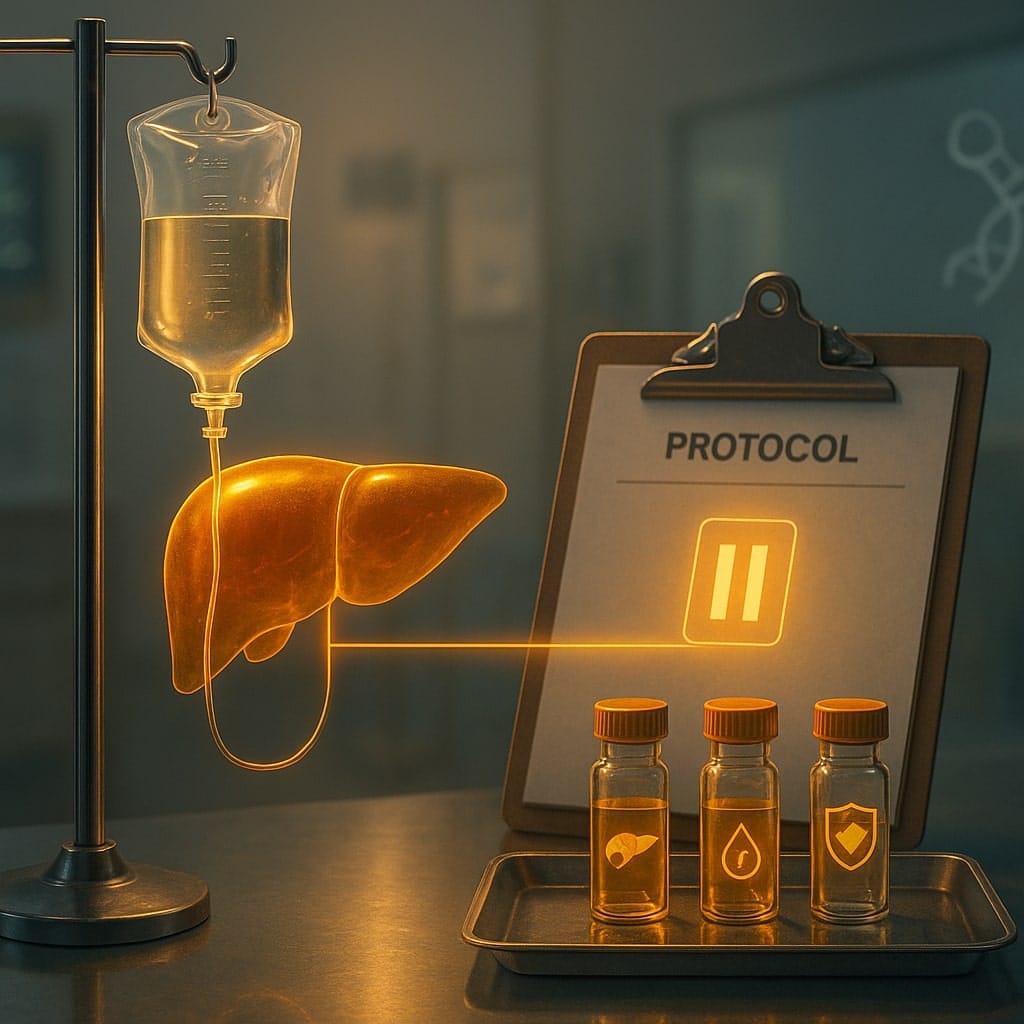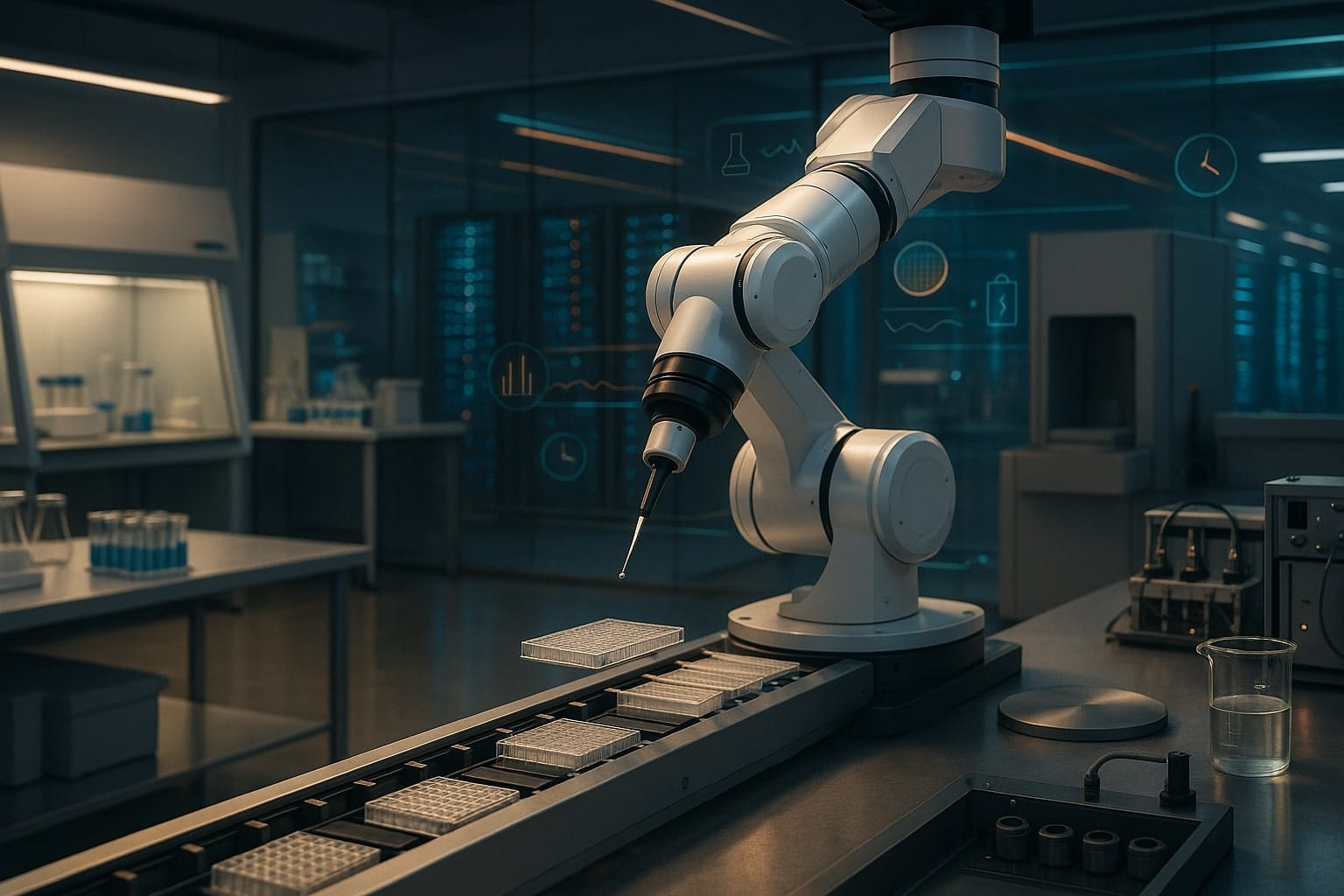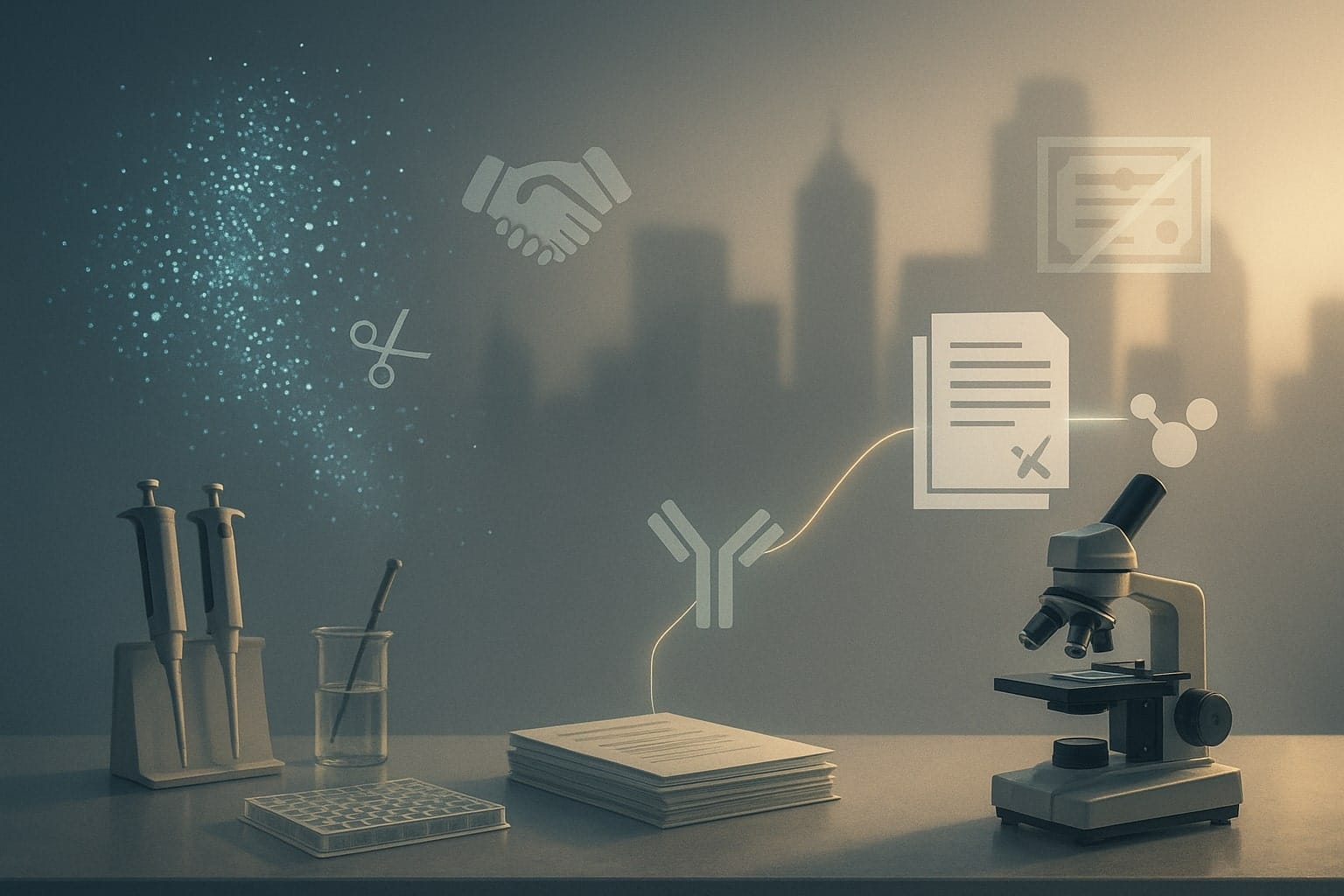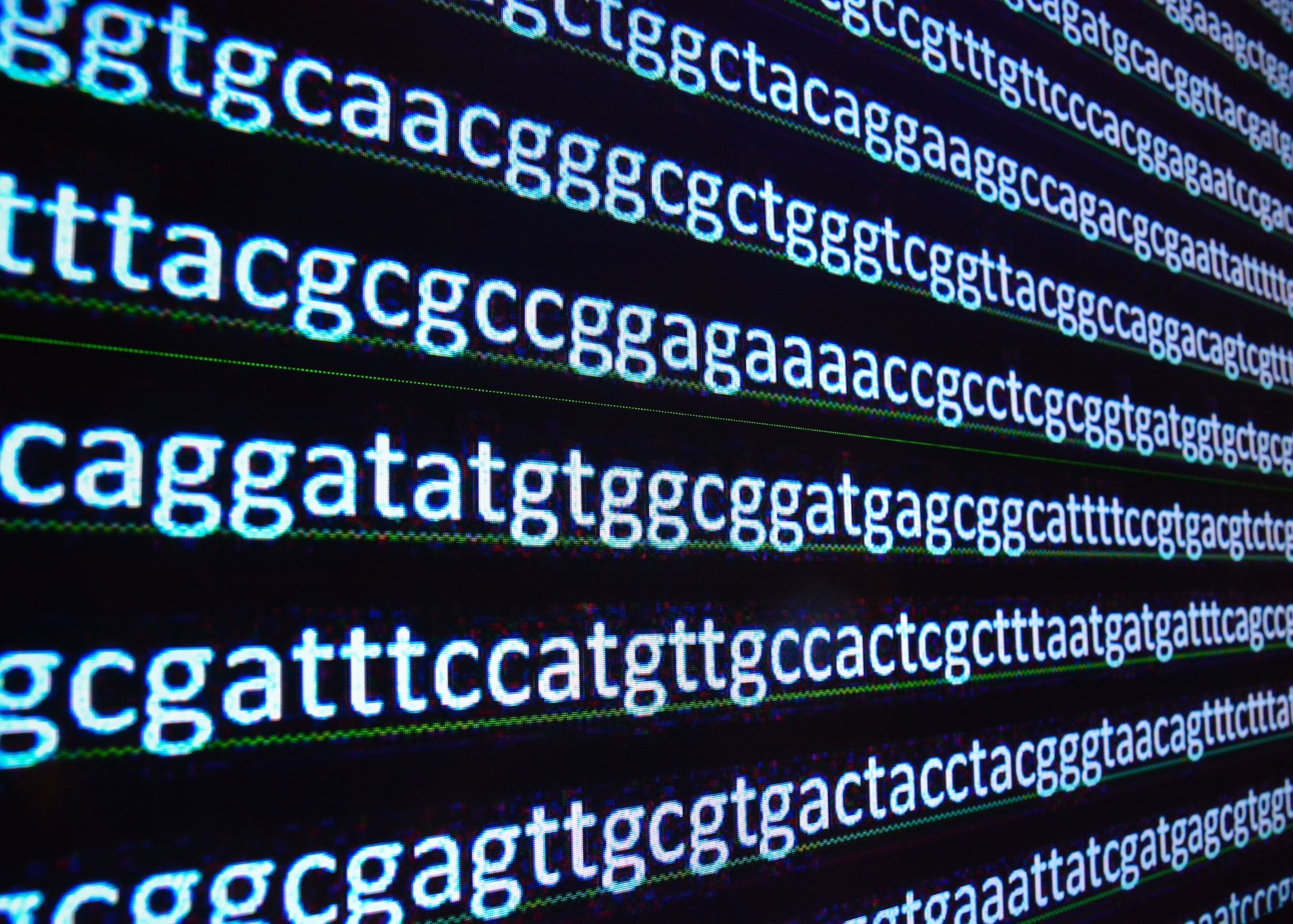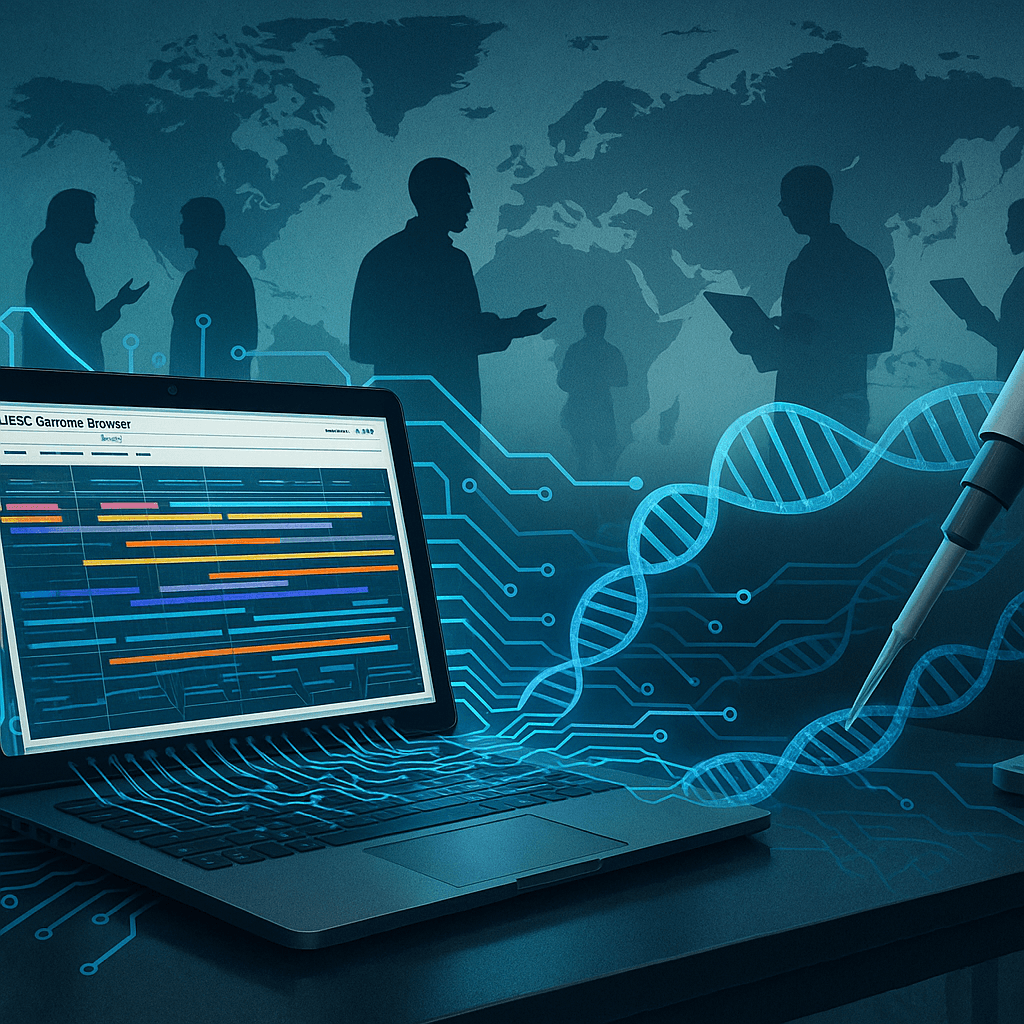In a world obsessed with youth, some scientists are turning to the world’s oldest people for answers. This week, a small biotech startup called Matter Bio announced an audacious initiative: to sequence – and openly share – the genomes of thousands of individuals aged 100 and above. The project aims to crack one of medicine’s toughest puzzles: Why do some people live past a century with remarkably good health, and what secrets are hidden in their DNA?
The endeavor, reminiscent of a genomic moonshot, will involve decoding the complete genetic blueprints of over 10,000 centenarians (people 100+ years old) and even rarer supercentenarians (110+), along with 20,000 of their family members. By making this trove of data publicly available, Matter Bio hopes to galvanize global research into aging – inviting scientists everywhere to sift through the genetic clues of our most long-lived humans. It’s a bold open-science approach that breaks with the secretive tradition of Silicon Valley’s longevity labs, and it could reshape our understanding of how genes influence aging.

But sequencing the “Century Club” is about more than just curiosity. The stakes are high: if we can identify genetic factors that let some people reach 100 in good health, those insights might spur new therapies – from gene editing to anti-aging drugs – that could help more of us live longer, healthier lives. At the same time, openly publishing human genomic data at this scale raises profound questions about privacy, ethics, and who stands to benefit. As Matter Bio’s initiative gets underway, it’s worth examining the science behind supercentenarian DNA, how this effort differs from other anti-aging moonshots, and what it might mean for the future of growing old.
Table of Contents
ToggleThe Genetic Secrets of the Oldest Old
Longevity has long fascinated scientists. A century ago, living to 100 was virtually unheard of; today centenarians, while still rare, are the fastest-growing demographic in many countries. (In the United States alone, the centenarian population is projected to quadruple from about 101,000 in 2024 to over 422,000 by 2054.) These individuals aren’t just old – many are extraordinarily healthy for their age, often avoiding or delaying age-related diseases that kill others decades earlier. Researchers describe this as a “compression of morbidity“: many centenarians put off the typical diseases of aging until the very end of life. For example, a person who lives to 102 might remain active and independent into their late 90s, only experiencing serious illness in the final years or months. This remarkable healthspan suggests that something about their biology is protecting them from the ravages of age.
Lifestyle – diet, exercise, not smoking – certainly contributes to healthy aging, but it can’t be the whole story for those who hit triple digits. In fact, genetics appears to play a decisive role in exceptional longevity. Studies of centenarian families have found that longevity runs strongly in families: siblings and children of centenarians have a much higher chance of reaching old age themselves. One landmark study from the New England Centenarian Study reported that brothers of centenarians were at least 4 times more likely to live to 91 than the general population. As Dr. Thomas Perls, founder of that study, put it: “living to 100 [is] a terrific advantage” – and one often shared by relatives.
Over the past two decades, scientists have hunted for specific “longevity genes” that might give these families their edge. Early clues came in 2001, when researchers pinpointed a region on Chromosome 4 linked to exceptional longevity in multiple siblings. Since then, geneticists have identified a few standout genes. One of the most consistently implicated is FOXO3, a gene involved in stress resistance and metabolism. Variants of FOXO3 have been confirmed in at least 11 independent studies to correlate with longer lifespan – essentially making it a bona fide “longevity gene” in humans. People with certain versions of FOXO3 are more often found among centenarians than in the general population, an effect seen in groups as diverse as Italians, Germans, Chinese, and Japanese. Another frequent player is APOE, a gene famous for its link to Alzheimer’s disease. The APOE ε4 variant raises risk of Alzheimer’s and is notably scarce in centenarians (those who live 100+ tend to avoid this high-risk gene). Conversely, the favorable ε2 variant of APOE – which may protect against dementia and heart disease – is often enriched in long-lived individuals (though findings can vary by population).
Yet for all these discoveries, the overarching lesson has been that extreme longevity isn’t due to a single gene or “magic” mutation. Instead, it appears to result from many genetic factors, each contributing a small boost to survival. As the New England study concluded, reaching 100 likely involves “many genetic modifiers each with modest effects, but as a group they can have a strong influence”. In other words, the genetic recipe for a long life is complex and multifaceted – a bit of benefit here, a slight edge there, adding up over a lifetime. This complexity has made it difficult for previous studies (often with only a few hundred centenarians) to conclusively pinpoint which DNA differences truly matter. Only a handful of associations (like FOXO3 or APOE) have been replicated across studies. Many others have been suggested – genes related to cholesterol metabolism, DNA repair, immune function, and more – but their evidence remains tentative.
This is why scale is so crucial. “The power to detect association with longevity is greater for centenarians versus nonagenarians,” one longevity genetics paper noted – meaning the more extremely long-lived the person, the more likely you’ll find genetic signals – but you also need large numbers of genomes to filter signal from noise. Past projects maxed out at maybe a few thousand exceptionally old individuals worldwide. That’s where Matter Bio’s new initiative intends to break new ground. By assembling the largest-ever sample of centenarians – over 10,000, which is several times bigger than previous cohorts – and sequencing every letter of their genomes, scientists hope to finally get the statistical power needed to discover the subtle genetic recipe for long life. “Pinpointing the genetic signatures that drive longevity is one of the greatest challenges in modern science,” says Dr. Jan Vijg, a geneticist at Albert Einstein College of Medicine, adding that comprehensive DNA analysis is bringing researchers “closer than ever to unraveling these complexities”.
A Global Effort to Crack the Longevity Code
Matter Bio’s announcement sketches an effort of unprecedented scope, not just in human data but across the tree of life. The company – a young biotech based in New York – has pulled together a consortium of leading aging researchers and institutions to help carry out what it calls “one of the most comprehensive efforts in aging science to date”. Among the collaborators are heavyweights in the field: Harvard geneticist George Church, a pioneer of genomic science; Dr. Nir Barzilai of Einstein College of Medicine, who has studied centenarians for decades; Dr. Vera Gorbunova of Rochester, an expert on longevity in animals; and others from top universities. It’s a who’s-who team united by a common mission: to decode the genetic basis of extreme lifespan.
According to the plan, the team will sequence whole genomes from over 10,000 people who’ve lived to 100 or beyond, along with 20,000 of their relatives. For comparison, they’ll also include an enormous reference panel of 200,000 typical individuals’ genomes (essentially the general population) to see what genetic variants are truly unique to the long-lived. But it doesn’t stop at humans – the project will delve into the animal kingdom as well. Matter Bio is gathering data from more than 300 animal species, ranging from short-lived creatures like mice to extraordinarily long-lived ones like whales and turtles. Notably, this includes enigmatic species such as the Greenland shark, believed capable of living over 400 years, and other record-holders of longevity. By comparing the genetics and biology of long-lived species to short-lived relatives, scientists hope to spot common patterns – the biological “tricks” that evolution has used repeatedly to extend lifespan. If both whales and human centenarians share certain molecular signatures, for example, that would be a strong hint those factors are fundamental to longevity.

The data won’t just be DNA sequences. Matter Bio describes a “multi-omics” approach – meaning they plan to collect a wide array of biological data: not only genomes, but also gene expression profiles (transcriptomics), proteins (proteomics), metabolic chemicals (metabolomics), and more from these subjects. This will generate a tsunami of information about what’s going on inside the cells and tissues of the very old. Sifting through it all is a herculean task – one that the company says will be aided by cutting-edge AI analysis to find patterns within the massive datasets. It’s a strategy increasingly common in biotech: throw a wealth of data into advanced machine-learning algorithms, in hopes of teasing out hidden correlations that human analysts might miss.
What truly sets this initiative apart, however, is its open-science ethos. Matter Bio has indicated that the longevity genomes will be made openly available, rather than kept proprietary. In essence, the company is “openly sequencing” these thousands of super-agers – inviting the wider scientific community to share in the discoveries. It’s a philosophy championed by co-founder George Church, who famously launched the Personal Genome Project years ago to openly publish volunteer genomes for research. By releasing data freely (with appropriate safeguards), the project can leverage brainpower from around the world: any grad student, physician or citizen-scientist could download the sequences and hunt for longevity clues.
This stands in stark contrast to the usual approach in the biotech industry. Typically, valuable human genetic data is guarded as a trade secret – a competitive asset to drive in-house drug discovery. Here, Matter Bio seems to be flipping the script, more akin to the public Human Genome Project (HGP) of the 1990s than a private corporation. In the HGP, an international consortium openly shared DNA sequences as they were decoded, which famously helped outpace a competing private effort by Celera Genomics. (Celera had planned to patent and sell genomic data access, but ultimately “free genome databases” in the public domain “defeat[ed] Celera,” forcing the company to abandon the model.) By channeling that open-science spirit, Matter Bio’s project could similarly ensure that insights into aging belong to everyone, not just one company’s labs.
“At Matter Bio, we’re determined to shift the paradigm from disease treatment to preventative health solutions that can significantly extend the healthy human lifespan,” said CEO Chris Bradley in the launch announcement. Instead of working in isolation, the company has built a “world-class alliance” of experts and institutions, he noted. The collaborative, open-data model is designed to accelerate progress on a problem no single team can solve alone. If the genetic keys to longevity are hidden in the data, making that data broadly accessible increases the odds that someone, somewhere will find them. As Dr. Church put it, uniting these vast datasets with modern tools gives “a rare opportunity to intervene in aging processes in ways never before possible”.
The sheer scale of the undertaking is hard to overstate. The plan involves sequencing on an industrial scale – tens of thousands of human genomes and an ark’s worth of animal DNA. For perspective, the entire Human Genome Project two decades ago sequenced just a handful of genomes; even recent longevity studies have only sequenced a few dozen centenarians at full genome resolution. By going for 10,000+, this project enters uncharted territory. It also means enormous volumes of data will be flowing into public databases. To manage privacy, Matter Bio will need to anonymize human genomes and likely work with established repositories (such as NIH’s genomic data resources) to make data available to qualified researchers. But if achieved, the payoff would be a reference library of longevity: a resource that could be mined for discoveries for years or decades to come.
Breaking Ranks with Silicon Valley’s Longevity Club
Matter Bio’s open-data approach is notably different from some other well-funded efforts in the longevity biotech space. In the past decade, a number of high-profile companies – often bankrolled by tech billionaires – have jumped into anti-aging research. Names like Calico Life Sciences (backed by Google’s Alphabet), Altos Labs (funded by Amazon’s Jeff Bezos and others), and the nonprofit Hevolution Foundation (supported by Saudi Arabia’s wealth fund) have become synonymous with the quest to extend human lifespan. Yet these players have operated with very different philosophies, and none have (so far) openly shared data on the scale Matter Bio is proposing.
Take Calico, for example. Launched in 2013 with much fanfare as “Google vs. Death,” Calico went on to develop a reputation for extreme secrecy. The company built a state-of-the-art research facility and recruited top scientists to study aging, but outsiders have heard little about its progress. “Researchers are puzzled by Calico’s stealthiness and say it’s not good for science,” Vox reported in 2017. At that time, four years in, it was unclear exactly what Calico was doing – beyond broad promises to understand the biology of aging. Academic collaborators found the flow of information tightly restricted. The stealth approach led some in the field to grumble that Calico was hoarding knowledge that could otherwise help everyone. Even Calico’s former founding investor, Bill Maris, later said he was “disappointed” with the lack of visible progress, noting the company wasn’t progressing “how I envisioned it at all”. To its credit, Calico has since published some findings (for instance, studies on naked mole rat biology and cellular aging pathways) and entered a partnership with AbbVie to develop drugs for age-related diseases. But the culture of secrecy around its projects is the polar opposite of an open-data initiative. Matter Bio’s plan to put genomes into public databases is almost a direct rebuttal to Calico’s guarded approach – an attempt to ensure that longevity research moves forward in the open, with many minds on the problem.
Then there’s Altos Labs, unveiled in early 2022 as perhaps the most lavishly funded startup in biotech history. Backed by a reported $3 billion from investors including Jeff Bezos and Russian billionaire Yuri Milner, Altos poached dozens of star scientists (including Nobel laureate Shinya Yamanaka) to work on cellular rejuvenation – essentially reprogramming old cells to a more youthful state. The company’s goal, while lofty, is fairly specific: harness the kind of gene therapy that can “rejuvenate cells in the lab” and potentially “halt biological aging” in animals and eventually humans. Altos Labs has been more transparent than Calico in some respects; its researchers have published studies on reprogramming and aging clocks, and it engages with the scientific community. However, Altos is still a traditional private venture in that its data and discoveries are proprietary until published or patented. It has not signaled any intent to open source the massive data it’s undoubtedly generating from experiments. In contrast, Matter Bio – with far fewer financial resources – is leveraging openness and collaboration as force multipliers. Rather than build a secretive in-house empire, Matter is teaming with academia and making data a public good, an approach more akin to an academic consortium or a public health study.
The Hevolution Foundation presents yet another model. Launched in 2021 out of Riyadh, Saudi Arabia, Hevolution is a nonprofit with an astonishing pledge of up to $1 billion per year to fund aging research globally. Its mission is to accelerate scientific discoveries that can extend healthy lifespan, mainly by providing grants and investments to researchers and companies around the world. In effect, Hevolution behaves like a mega-funder, seeding many disparate projects – from basic science on aging pathways to clinical trials of potential longevity drugs. For instance, Hevolution has co-funded the TAME Trial, a large study testing metformin (a common diabetes drug) to see if it can delay multiple age-related diseases. While Hevolution’s broad support undoubtedly boosts open academic research, the foundation itself doesn’t directly generate or openly share data in the way a genome project would; it supports others’ work (which may be published openly eventually). Matter Bio’s initiative is different in that the company is both driving the data generation and committing to share it. It’s essentially a hybrid of a private startup and a public research effort.
All of these approaches – secretive corporate labs, well-funded basic research, and open-data collaboration – reflect different philosophies on how to crack the problem of aging. Matter Bio’s bet is that openness and scale will win the day. By bringing together many experts and making the data accessible, they hope to ignite a kind of distributed, collective effort on longevity genetics. It’s a page borrowed from big science projects like the Human Genome Project and the Cancer Genome Atlas, which showed that sharing data can accelerate discovery across the whole field. In aging research, this could be a welcome catalyst. No single company or lab has a monopoly on good ideas, after all – and the biology of aging is so complex that fresh insights could come from anywhere.
At the same time, the collaborative approach doesn’t mean the effort lacks ambition for real-world impact. Matter Bio is still a company, and it has its own platform for developing interventions. The CEO’s vision of “preventative health solutions” to extend lifespan hints at how they intend to use the discoveries. In the press release, Matter Bio described “harness[ing] naturally occurring DNA stability variants and deliver[ing] them to human cells to dramatically enhance cellular longevity”. In plainer terms, that suggests gene therapy: taking beneficial gene variants found in long-lived people and using biomedical tools to introduce those into others. (For example, if a rare variant makes someone’s cells better at repairing DNA damage, one could imagine a therapy to give that advantage to the broader population.) It’s a bold concept – effectively cutting and pasting longevity traits from the Methuselahs of our species into the rest of us. Whether that can really be done safely is a question for the future, but it underscores that Matter Bio, like Altos and others, ultimately wants to create treatments that slow aging or prevent age-related diseases. They are not just collecting genomes for science’s sake; they are looking for targets and tools to translate into medicine.
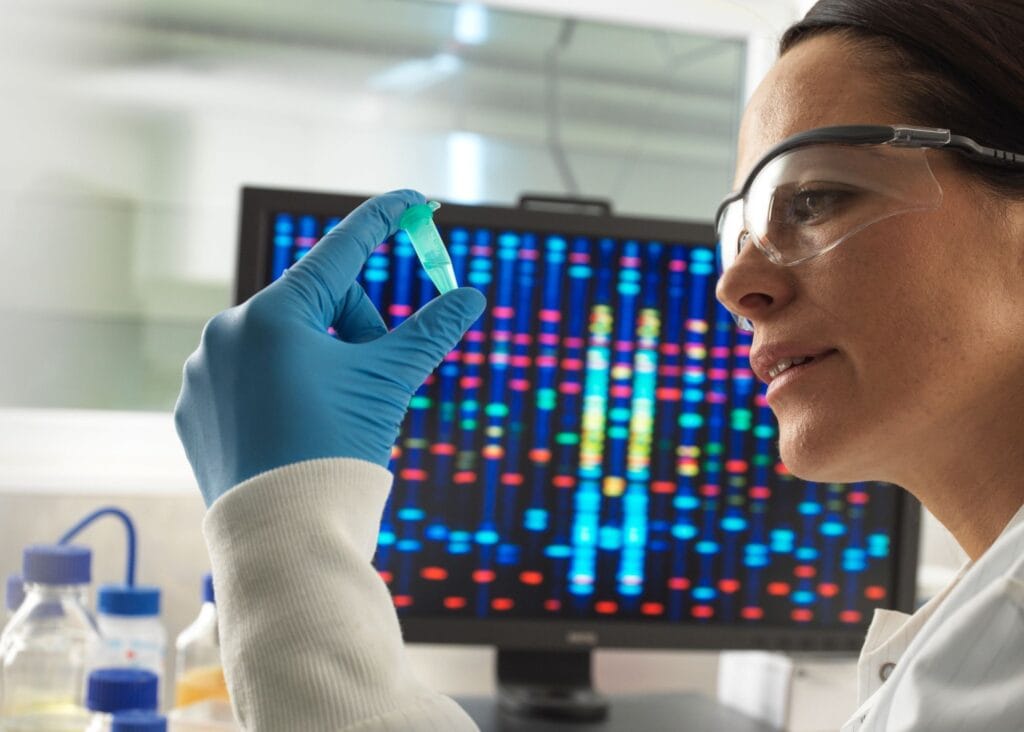
From DNA to Drugs: Can Genetic Insights Yield Anti-Aging Therapies?
What might an actionable discovery from this supercentenarian genome project look like? The hope is that by comparing thousands of long-lived people to “normal” folks, certain genetic differences will light up – differences that point to concrete biological advantages. Perhaps the centenarians have unique variants in genes related to cell maintenance, or extra copies of protective genes, or lower loads of harmful mutations. Any such findings could guide new approaches to therapy.
One likely outcome is identifying key molecular pathways that are dialed up or down in the long-lived. For instance, decades of research in model organisms (like worms, flies, and mice) have highlighted certain pathways – such as insulin/IGF signaling, TOR signaling, and cellular stress response networks – that can dramatically affect lifespan. Human centenarians may have subtle genetic tweaks in these same pathways. If so, drugs could potentially mimic those tweaks. In fact, some existing drugs already target known longevity pathways: rapamycin, an immune-suppressant, inhibits the mTOR pathway and has extended lifespan in mice; metformin, a diabetes medication, affects insulin signaling and is being tested for anti-aging effects in humans; even senolytics (experimental drugs that clear senescent “zombie” cells) aim to replicate the natural cleanup that some younger or perhaps genetically resilient bodies do well. The genome data might reveal new targets along these lines – say, a previously underappreciated protein that supercentenarians all share a rare form of, which keeps their inflammation lower or their stem cells robust. That protein could become the focus of a drug development program (a small molecule to boost or inhibit it appropriately).
History shows that human genetics can inspire drugs. A notable example often cited: people with a rare mutation in the gene PCSK9 were found to have ultra-low cholesterol and almost no heart disease; this genetic insight directly led to the development of PCSK9-inhibitor drugs, now used to prevent heart attacks. In the realm of longevity, there are hints of similar stories. Dr. Nir Barzilai, one of Matter Bio’s collaborators, has long studied Ashkenazi Jewish centenarians and uncovered gene variants that influence lipid metabolism and growth factor signaling. “Several drugs have been developed in part from data collected from the initial [longevity] studies,” Barzilai notes – pointing to pharmaceutical companies Merck and Ionis as having taken interest. For example, Merck’s drug anacetrapib, a cholesterol modulator, was tied to research on a gene (CETP) found in centenarians with high HDL levels. Ionis Pharmaceuticals has developed therapies targeting genes like APOC3, which came onto the radar because certain long-lived (and heart disease–resistant) individuals had mutations knocking out that gene. While these drugs were pursued mainly for cardiovascular benefits, they illustrate the pipeline from finding a gene in a unique human population → making a therapy that could help many others.
With an order-of-magnitude more data, Matter Bio’s project could yield dozens of such leads. A discovered gene variant that protects against Alzheimer’s, for instance, might lead to a gene therapy or an antibody drug to replicate its effect. In the announcement, co-founder Vera Gorbunova expressed optimism that this effort will help “transition fundamental discoveries in aging research into real-world gene therapies”, targeting the root causes of aging rather than diseases after they occur. It’s a vision where preventative treatment – perhaps a one-time genetic intervention or a long-term pill regimen – could fortify our bodies against the decline that typically comes with years.
Another intriguing avenue is using the data to develop biomarkers of aging. If we know what the molecular profile of a centenarian looks like, could we measure those same markers in a 50-year-old to predict if they’re on track for healthy aging? Scientists are already working on “biological age” clocks, like epigenetic clocks that measure DNA methylation patterns to estimate one’s physiological age. The genomes and epigenomes of extremely long-lived individuals could refine these measures. For example, researchers might find a pattern of gene activity or metabolic factors that is common to centenarians at 100. That pattern could become a benchmark for healthy aging, against which others are compared. It might also help test anti-aging interventions: if a therapy makes a middle-aged person’s biomarkers shift towards the centenarian profile, that’s a hint it’s working. The project’s multi-omics approach – spanning DNA mutations, gene expression, proteins, metabolites – is well-suited to identifying such biomarkers.
Of course, the gap between identifying a genetic marker and turning it into a usable therapy is significant. Not every finding will be actionable. Some longevity-associated genes might be undruggable (for instance, they might be genes that need to be more active, but it’s hard to safely increase a gene’s activity in all tissues). Others might have trade-offs; a variant that helps reach age 100 might come with disadvantages (maybe it protects the heart but slightly raises cancer risk, for example). These nuances will take years to unravel. Nevertheless, having the data is a starting point. “By systematically comparing long-lived organisms to shorter-lived controls, the research team aims to identify key pro-longevity genes and molecular pathways,” Matter Bio stated, which will “serve as a powerful foundation for developing targeted therapeutics and interventions to extend healthspan and combat age-related diseases.” In plainer terms, the genomes should give a roadmap to where aging might be slowed, and then it’s up to biomedical science to build the vehicles (drugs, gene therapies) to travel that road.
We should also temper expectations: aging is unlikely to be “cured” by a single breakthrough. It’s a fundamental aspect of biology, intertwined with countless processes. Even if we discover 20 important longevity genes, applying that knowledge might involve 20 different treatments. And extending maximum human lifespan (pushing beyond the current record of 122 years) may prove much harder than extending average healthy lifespan. Many geroscientists believe the goal should be improving healthspan – the number of years one lives in good health – more so than simply adding years of life. The centenarians themselves embody this: they don’t necessarily live forever, but they live well for very long, often with only a short period of illness at the end. If medicine can help more people achieve that outcome, it would be a huge win.
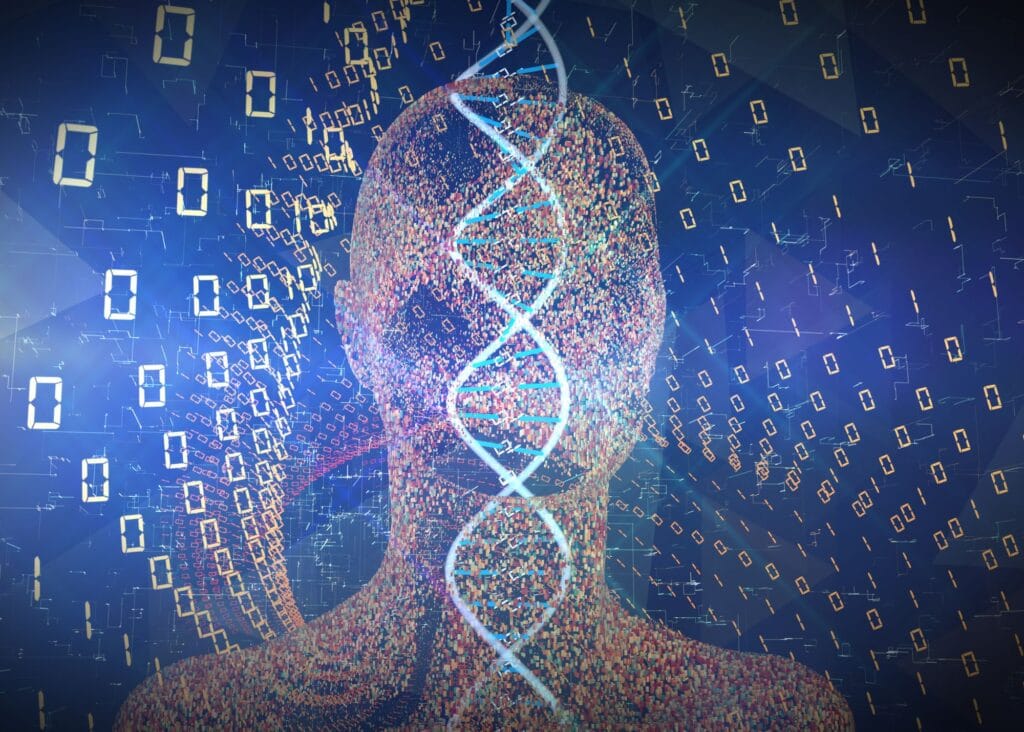
The Promise and Peril of Open-Source Genomes
Matter Bio’s decision to openly share human genomic data at this scale is bold and a bit controversial. On one hand, openness could dramatically accelerate scientific progress. On the other, it raises serious privacy and ethics questions that will need careful navigation.
The benefits of open data are evident in scientific history. The Human Genome Project’s open policy famously prevented a monopoly on genomic information. In disease research, open databases (like those for cancer genomics) have enabled countless discoveries by researchers who would never have had access to the raw data otherwise. By making the supercentenarian genomes available to all, Matter Bio could catalyze a flurry of independent analyses. One lab might look for longevity genes related to brain aging, another might focus on immunity, another on repairing DNA – each mining the data from their angle. Importantly, open data allows verification of results; if one team claims “Gene X variant boosts lifespan by 10%,” others can double-check in the same dataset. This transparency can prevent false leads and ensure that robust findings emerge.
Moreover, an open approach fosters global equity in research. Not every scientist has the funding to collect 10,000 genomes, but many have the expertise to analyze data. By providing a rich dataset, the project lets researchers in, say, Brazil or India join the longevity hunt alongside those in Boston or London. This democratization can lead to insights that a closed corporate team might overlook. It also means that any breakthroughs derived from the data will have contributions (and thus shared recognition) from a broader swath of the scientific community. For participants – the centenarians themselves – some might find it gratifying that their genetic information will directly contribute to a public good, advancing knowledge for humanity, rather than sitting in a private vault.
However, genomic data is deeply personal, and sharing it widely is not without risk. A genome is like the ultimate identifier: it’s literally unique to you (unless you have an identical twin). Even when stripped of obvious personal information, DNA data can sometimes be traced back to individuals. In fact, a landmark shock came in 2008 when researchers demonstrated they could re-identify people from supposedly “anonymous” genomic datasets by cross-referencing a few genetic markers with genealogy databases. The backlash led the NIH and others to pull some genomic data off public websites. “In 2008, the Wellcome Trust and the NIH removed open web access to genomic datasets after it was demonstrated that individuals could be re-identified from aggregated data,” a review in Genome Medicine noted. Since then, most large human genome studies have used controlled-access databases: researchers must apply and agree to usage terms to get the data, rather than it being freely downloadable by anyone on the internet.
It’s unclear exactly how “open” Matter Bio intends the data to be – whether fully public or just widely available to qualified scientists. But even under controlled access, privacy is a concern. These centenarians will likely be giving informed consent for their genomes to be studied, but can they truly consent on behalf of their descendants? A quirk of genetics is that your genome also contains info about your relatives. If a 105-year-old’s genome is published, one could infer something about her children’s risk for certain diseases or traits (since children share half their DNA). This could arguably infringe on family members’ privacy if sensitive information came to light.
There’s also the matter of consent capacity. Some people at 100 are mentally sharp; others may have cognitive impairments like dementia. Ensuring that participants understand what it means to publicly share their DNA is ethically vital. This is something the Personal Genome Project grappled with by using extensive education and “open consent” protocols, essentially making sure volunteers knew the worst-case scenarios (like someone could identify them or find a disease risk in their data). For a centenarian project, similar diligence will be needed. The involvement of experienced researchers and (hopefully) bioethicists suggests they’ll take these precautions seriously.
Another dimension is data misuse and equity. In an open model, who benefits from the data? In the best case, everyone does – because any company or researcher can use it to develop a therapy that ultimately helps patients worldwide. But there’s a scenario where large pharmaceutical companies, with their superior resources, mine the open data and then patent drugs or tests based on it, potentially yielding huge profits with little credit to the original donors beyond a generic acknowledgement. Meanwhile, those donors (and their families) might not directly see benefits or affordable access to resulting treatments. This dynamic isn’t unique to open data – even in closed studies, participants rarely get a share of profits – but openness can magnify the gap between contributors and downstream users. Some have proposed models where if open genomic data leads to a blockbuster drug, a portion of proceeds could go into a fund for the participant community or longevity research in general, as a form of reciprocity. This is more an ethical consideration than a standard practice at present.
There’s also a societal concern: as we discover genetic factors for longevity, it might prompt tricky questions about fairness and genetic enhancement. For instance, if a particular gene variant is highly protective against aging, should we give that to people via gene therapy? Would that create a class of “genetically enhanced” long-lifers? How would that interact with existing disparities (e.g., only the rich affording the procedure)? While this is a bit speculative, the open nature of the data means these debates won’t be confined to one company’s boardroom – they can happen in public, which might be a good thing. Society at large can weigh in on how such interventions, if they arise, should be deployed.
In short, open-sourcing human genomic data is a double-edged sword. It can accelerate knowledge and innovation, but it requires robust safeguards and ethical frameworks. Transparency is key: participants should know exactly what they’re signing up for, and the public should know how the data is being protected and used. Matter Bio will have to navigate regulations too, possibly working within frameworks like those of NIH’s dbGaP (Database of Genotypes and Phenotypes) or the European Genome-phenome Archive, which manage access to human genomic data for research. If successful, the project could set a precedent for how to do large-scale open genomics in a responsible way. It might even normalize the idea that certain big scientific challenges – like understanding aging – warrant a “pre-competitive” collaboration, where companies and academics alike pool data for the greater good, at least in the discovery phase.
Lessons from the Past, and a New Chapter Ahead
The quest to understand human longevity has been marked by both breakthroughs and bafflements. Scientists have learned that there is no single elixir of life hidden in our genes – aging is too complex for a simple fix. But they have also confirmed that genetics matters: the blueprint we inherit can tilt our fate towards a longer or shorter life. Now, with advanced sequencing technology and data analytics, researchers are poised to dive deeper than ever into that blueprint.
Matter Bio’s centenarian genome initiative represents a culmination of sorts – the logical next step after years of smaller studies hinted at the genetic basis of long life. As Dr. Barzilai observed, centenarians give us a model of slowed aging, and “data collected from the initial studies” have already started pointing toward interventions. But this new effort is like going from a telescope to the James Webb Space Telescope: a far more powerful view, potentially revealing fine details previously invisible. It’s a leap into big-data geroscience, and it comes not a moment too soon. Many of the world’s supercentenarians – those 110+ – are members of a dwindling cohort born in the early 1900s. Capturing their genomes and health data is a race against time, quite literally, as these living treasures of information won’t be with us forever.
What might we find when thousands of long-life genomes are laid side by side? We might confirm known candidates – perhaps FOXO3 will shine even more brightly as a longevity gene when the numbers are large. We will likely find new genetic associations that never reached significance before: maybe novel variants in genes related to DNA repair, protein homeostasis, or cellular senescence. There could be protective alleles for diseases – for instance, gene variants that confer resistance to dementia or cancer (conditions that centenarians remarkably often escape or overcome). We might also learn what isn’t important: sometimes big data overturns hypotheses by showing a gene thought to be critical isn’t that different in the long-lived versus general population. Either way, it will refine our understanding.
Crucially, the project isn’t just about the genes themselves, but about how they interact with environment and lifestyle. Many centenarians attribute their longevity to things like a positive attitude, staying active, or a daily spoonful of olive oil. While genetics is the focus here, scientists will also be able to correlate genotypes with phenotypes – for example, do those with certain gene profiles tend to have certain life habits or biomarker levels? The inclusion of multi-omics data (like blood metabolite levels) means the research could uncover not just genetic differences, but downstream effects: how do the bodies of centenarians function differently? One could imagine the data revealing, say, that the long-lived have unusually efficient DNA repair in their cells, evidenced by fewer mutations over time. In fact, a 2021 study of semi-supercentenarians (ages ~105) in Italy found exactly that – a lower mutation load in their genomes compared to younger controls, suggesting superior DNA repair mechanisms. It also found hints of longevity-associated variants in genes like APOC3 (involved in lipid metabolism) and PPARGC1A (involved in energy metabolism). Those kinds of findings, multiplied by a larger sample, could cement certain pathways as targets for intervention.
From a societal perspective, if this open-data model proves successful, it might influence how other big challenges are tackled. We could see more public-private hybrid efforts where companies contribute to open knowledge generation (especially in foundational research areas like aging, where the field is still discovering what to target). It could also inspire a new generation of researchers to enter geroscience, drawn by the availability of rich data and the prospect of making a meaningful impact on an aging world population.
There will undoubtedly be skeptics. Some might argue that genetics isn’t the key to longevity at all – pointing out that public health measures and lifestyle improvements have raised life expectancies dramatically in the last century, far more than any gene ever could. Others might caution that focusing on the very old could yield diminishing returns; perhaps these folks are too unusual, and what we learn won’t apply to most people. These perspectives remind us to keep expectations realistic. The project is unlikely to hand us a recipe for immortality. But if it can identify factors that help people stay healthy into their 90s and 100s, that knowledge is immensely valuable. After all, as lifespans increase, societies face new challenges: more people living into their 80s and 90s means more burden of chronic diseases like Alzheimer’s, unless we find ways to extend healthspan in tandem. Centenarians, who often avoid these diseases until very late, might hold the clues to achieving quality longevity.
As we stand on the cusp of this new research era, there’s a palpable sense of excitement – and urgency. The first human genome took 13 years to sequence; now a single lab can sequence hundreds in a week. The idea of sequencing everyone over 100 would have sounded like science fiction not long ago, yet here we are contemplating it as a real project. It speaks to how rapidly biotechnology has advanced. The challenge now is ensuring the science advances hand in hand with ethics and responsible innovation.
In the coming years, as the sequences roll in and the findings emerge, we may witness headlines about newly discovered “longevity genes,” or trials of anti-aging gene therapies inspired by supercentenarians. We may also hear cautionary tales or debates spurred by the open data – perhaps a privacy scare or an argument over how an invention from the data should be regulated. It will be a journey of discovery on multiple fronts: biological, technological, and social.
For now, the story returns to those remarkable individuals who carry a century’s worth of life in their cells. People like the 108-year-old who still gardens each morning, or the 105-year-old who danced at her great-granddaughter’s wedding – they are the true heroes of this narrative. By donating a small sample of their blood or saliva, they become partners in science, their genomes a lasting legacy that could benefit future generations. In a sense, they are doing in death what they did in life – conferring a gift of longevity, only this time it’s knowledge that might help others live longer and better.
As one observer put it, the code to a long, healthy life may well lie in the DNA of those who’ve already lived it. By decoding that code openly and thoroughly, we inch closer to unraveling the mystery of aging itself. It’s a fitting tribute to the supercentenarians that even as their lives approach the sunset, they might illuminate a new dawn for humanity’s healthspan – letting more of us share, if not their extraordinary years, at least the vitality and wisdom that come with a life well-lived and long-lived.


